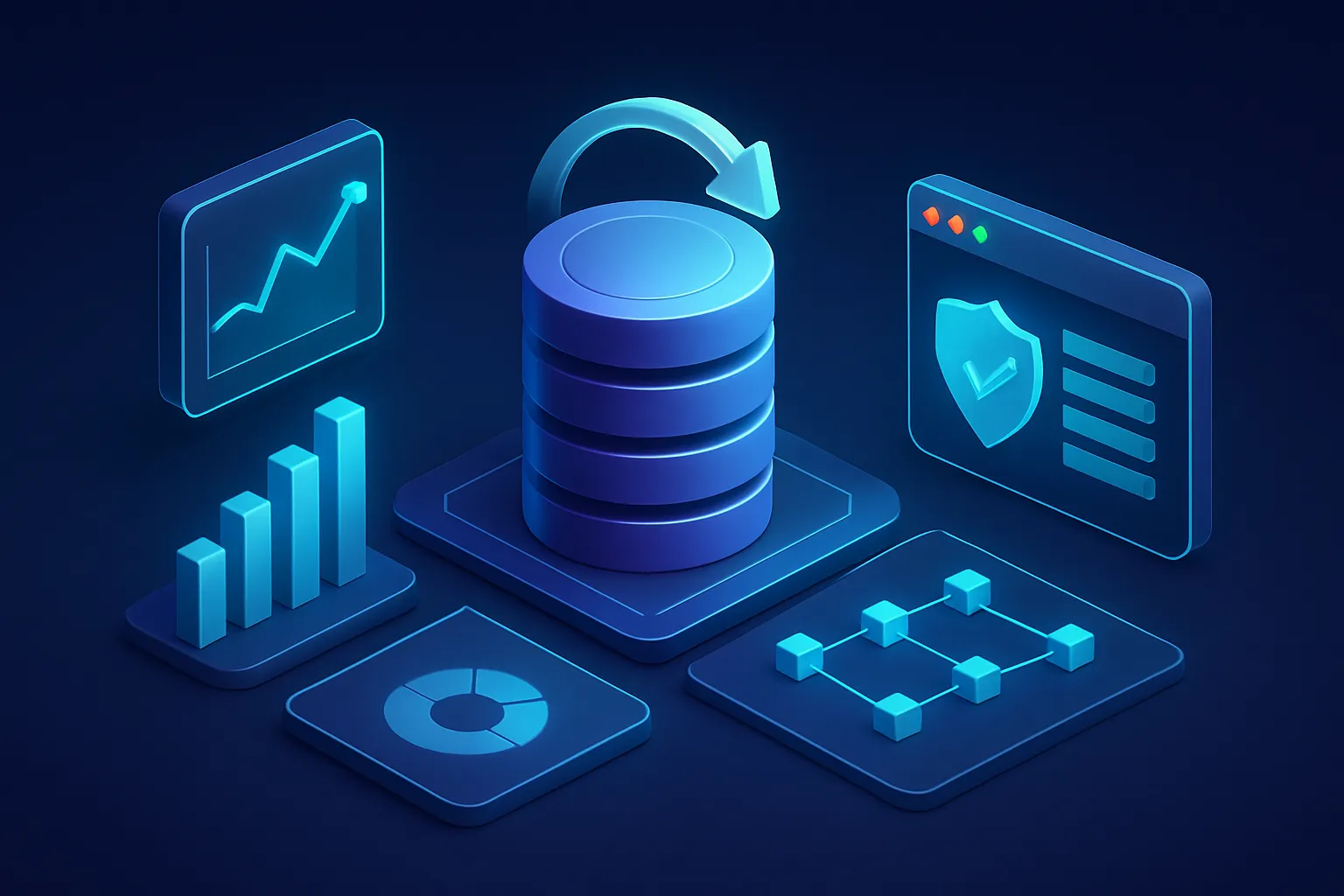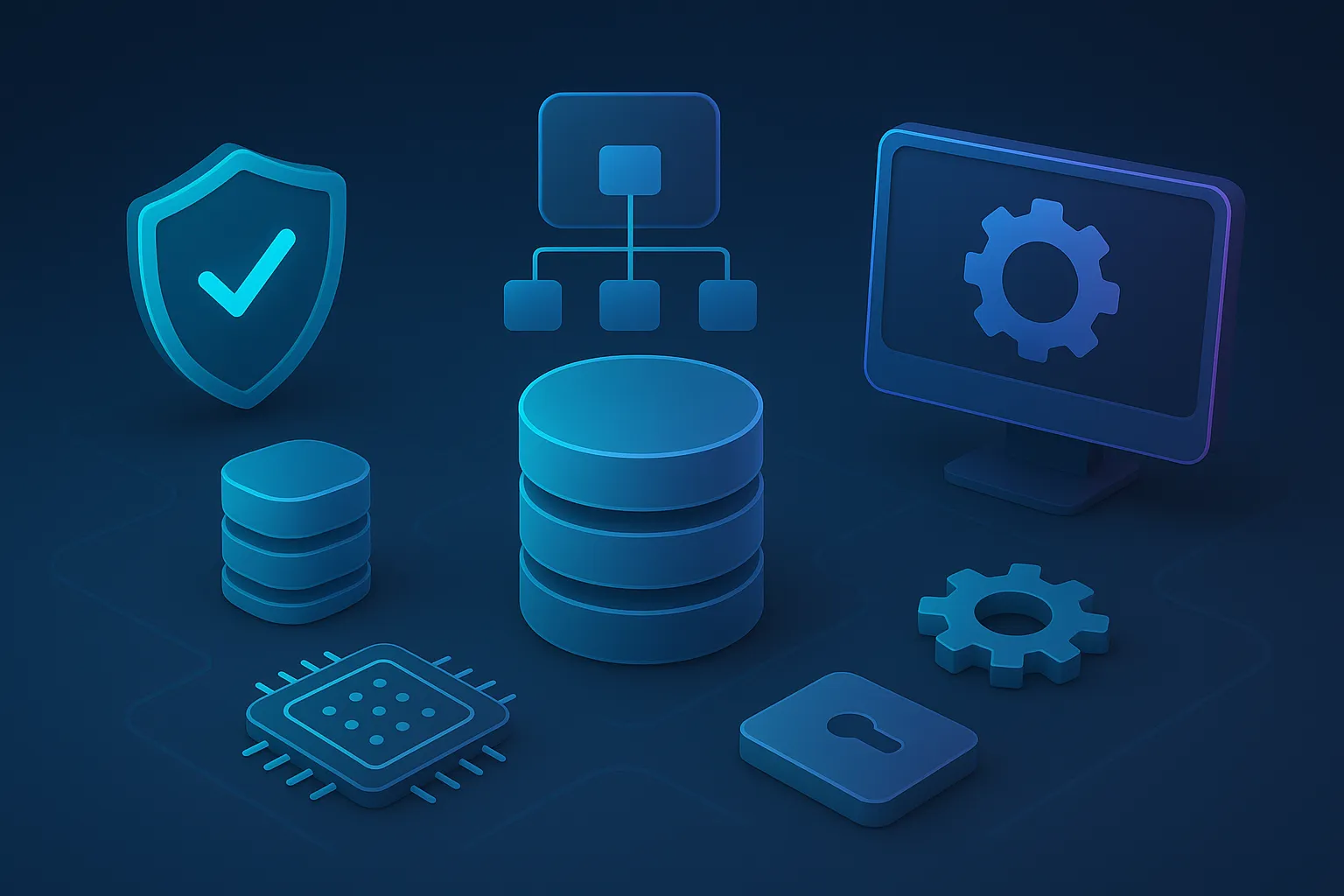July 24, 2025
July 24, 2025

Data is no longer just a byproduct of business operations, it is the business. From customer behavior and market trends to internal workflows and performance metrics, data now drives nearly every strategic decision. But with growing volumes of information comes growing complexity. Without a solid data management strategy, even the most data-rich organizations risk drowning in chaos, inefficiency, and missed opportunities. So, what exactly is data management in this new digital era and how can businesses turn it into a competitive edge? Let’s dive in.
Data management is the practice of collecting, organizing, storing, and maintaining data in a way that ensures its accuracy, security, and accessibility for informed decision-making. It encompasses a wide range of processes and technologies designed to govern the full data lifecycle from creation and ingestion to archival and deletion.
At its core, data management helps businesses transform raw information into usable insights. It provides the structure and discipline needed to make data a reliable asset rather than a liability. This involves not just technical tasks like database management, but also strategic considerations such as data governance, compliance, and data quality control.

In a business context, effective data management enables teams to:
As organizations increasingly rely on real-time analytics and AI-driven tools, a strong data management foundation is more critical than ever. It’s not just about storing information, it’s about unlocking its full potential.
In today’s data-saturated landscape, organizations no longer struggle with a lack of information, they struggle with making sense of it. As data flows in from countless sources, the real challenge lies in managing it effectively to unlock its true value. Without structure, even the most advanced systems or teams are left navigating blind.
At the heart of data management is the ability to support better, faster decision-making. When information is fragmented, duplicated, or outdated, decisions become delayed or worse, misguided. But with clean, consistent, and well-governed data, teams can act with confidence, supported by a clear picture of what’s happening across the business.
Effective data management also ensures organizations stay compliant in a regulatory environment that is constantly evolving. From GDPR to industry-specific data privacy rules, the stakes are high. A strong data foundation allows businesses to:
Beyond compliance, data quality impacts day-to-day performance. Clean and accessible data minimizes time spent searching, fixing, or reconciling errors. This leads to:
Just as importantly, strong data practices are essential for innovation. Tools like AI and predictive analytics can only deliver value when they are fueled by trustworthy, well-organized information. Without that, even the most promising digital initiatives can fall short.
In the end, managing data effectively isn’t just about reducing risks, it’s about creating opportunities. It turns data from a liability into a strategic asset that supports growth, agility, and long-term resilience.
Data management is not a single task, it’s a system of interrelated processes that ensure data remains accurate, accessible, and secure throughout its lifecycle. From the moment data enters an organization to the point it’s archived or deleted, each step plays a vital role in maximizing its value.
While the exact workflow may vary by business or industry, most effective data management strategies include the following core processes:
1. Data Collection: This is the entry point of any data lifecycle. Organizations gather data from a wide range of sources: websites, mobile apps, sensors, customer interactions, internal systems, and more. Key considerations at this stage include:
2. Data Storage: Once collected, data needs to be stored in a structured, scalable, and secure environment. Storage choices (e.g., cloud, on-premise, hybrid) affect performance, cost, and accessibility. An effective storage system must:
3. Data Organization and Structuring: Raw data is rarely usable in its initial form. It must be cleaned, categorized, and structured in a way that supports analysis and usage across departments. This involves:
4. Data Integration: Most businesses use multiple platforms CRM, ERP, analytics tools, etc. each generating its own datasets. Data integration combines these into a unified view for better cross-functional insights. This process focuses on:
5. Data Governance and Quality Assurance: Data governance defines the policies, roles, and standards that ensure data is used responsibly and accurately across the organization. Strong governance practices include:
6. Data Security and Access Management: As cyber threats increase and regulations tighten, protecting sensitive data is no longer optional. Security must be embedded at every stage. Key actions involve:
7. Data Archiving and Disposal: Not all data needs to live forever. Archiving preserves historical data for reference or compliance, while disposal ensures expired data is removed securely.
This step is critical for:
Together, these processes form the backbone of an effective data management strategy. When aligned with business goals and properly maintained, they turn raw data into a reliable engine for insight, compliance, and innovation.
Choosing the right data management tools is a critical step in building a strong, scalable data strategy. While the specific technology stack may vary between organizations, most data-driven enterprises rely on a set of core systems that support the full data lifecycle from ingestion to analysis.

Below are five common categories of data management tools, each serving a distinct function:
A DBMS is the backbone of structured data storage. It allows users to store, query, and manage data efficiently using a standardized interface.
These systems are essential for day-to-day operations, real-time applications, and foundational data reliability.
MDM solutions help establish a “single source of truth” by unifying critical business entities such as customers, products, or suppliers across multiple systems.
By centralizing and governing core data, MDM tools ensure better accuracy and trust in reporting, analytics, and operations.
A data warehouse is optimized for analytics and long-term historical storage. It aggregates data from different sources into a centralized repository for reporting and business intelligence.
Unlike operational databases, data warehouses are read-optimized and structured for decision support.

Data lakes offer flexible storage for raw data in various formats structured, semi-structured, and unstructured.
Platforms like Amazon S3 or Azure Data Lake allow teams to store vast datasets cost-effectively, even before defining how they’ll be used.
ETL tools automate the movement and transformation of data between systems.
ETL is crucial for maintaining data consistency and preparing datasets for analysis or reporting.
There’s no one-size-fits-all solution when it comes to data management. The right combination of tools depends on several factors:
By aligning tool selection with business objectives and technical context, organizations can build a flexible, future-proof data environment that delivers value across all functions.
At Serdao, we don’t believe in overcomplicating data, we believe in making it work for people.
While many organizations are overwhelmed by tools, dashboards, and frameworks, we start with something simpler: a conversation. We ask the right questions. What data do you already have? What’s missing? What’s holding your team back from using it effectively? From there, we help businesses build data management systems that are practical, scalable, and aligned with how they actually work, not just how the textbooks say they should.

We’re not here to sell a one-size-fits-all solution. Instead, we take a modular, adaptive approach. Some clients come to us needing a clean, centralized database. Others want to streamline how their teams access information. Many just want clarity where their data lives, who’s using it, and whether they can trust it.
Here’s what that typically looks like:
We're not trying to be everywhere in your business, we just want to be exactly where data makes a difference.
In short, Serdao helps organizations stop managing data for the sake of it, and start using it in ways that make work smarter, not harder.
Conclusion
Data doesn’t need to be complicated, it just needs the right kind of attention. With a thoughtful data management strategy, even the messiest datasets can become a source of clarity, not confusion.
Whether you’re just getting started or scaling fast, effective data management helps you make smarter decisions, empower your teams, and stay one step ahead. After all, the value of data isn’t in how much you collect but in how confidently you use it.